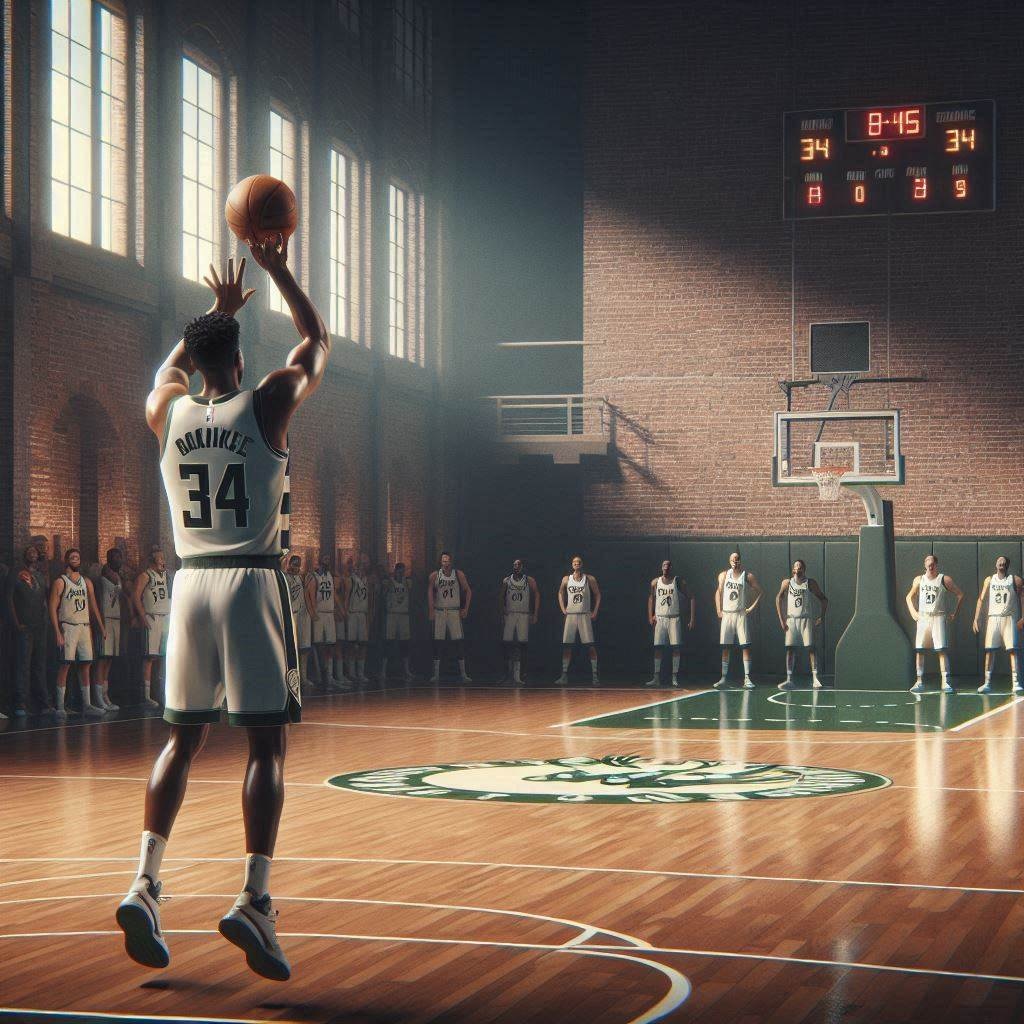The 3-point shot has become the heartbeat of modern NBA basketball, revolutionizing strategy and elevating players like Stephen Curry and Damian Lillard to legendary status. But for every sharpshooter, there’s a player whose struggles from beyond the arc become infamous. Whether due to poor shot selection, lack of range, or just an off year, some NBA seasons stand out for their abysmal 3-point percentages—especially when players take enough shots to make the numbers meaningful.
Defining “The Worst”: Setting the Ground Rules
To fairly assess the worst 3-point shooting seasons, we need a minimum threshold of attempts—otherwise, a player going 0-for-2 could claim the crown, which isn’t insightful. Historically, the NBA uses 82 made 3-pointers as a qualifier for the league lead in 3-point percentage (since 2013-14), but for the “worst” mark, a lower bar like 50 or 100 attempts ensures we’re looking at players who actually tried to shoot from deep, not just took a few errant heaves.
The Historical Bottom Feeders
- John Salmons, 2009-10 Season (Chicago Bulls/Milwaukee Bucks) – 18.5% (20-for-108)
John Salmons, a solid journeyman wing, had a career defined by versatility rather than shooting prowess. In the 2009-10 season, split between the Bulls and Bucks, he posted one of the lowest 3-point percentages ever for a player with over 100 attempts. At 18.5%, Salmons’ struggles were a mix of poor shot selection and a lack of natural touch from deep. His 108 attempts showed he was given the green light, but the results were disastrous. This mark stands as a benchmark for futility among players with a significant sample size. - DeMar DeRozan, 2018-19 Season (San Antonio Spurs) – 15.6% (7-for-45)
DeRozan’s midrange mastery is well-documented, but his 3-point shooting has always been a weak spot. In 2018-19, his first year with the Spurs, he took a career-low 45 attempts from beyond the arc and made just 7, yielding a ghastly 15.6%. While this falls short of a 50-attempt minimum some might prefer, it’s notable for a star player and reflects his reluctance—and inability—to adapt to the 3-point-heavy era under Gregg Popovich’s system. - Josh Smith, 2007-08 Season (Atlanta Hawks) – 25.3% (38-for-150)
Josh Smith was an athletic marvel—dunking, blocking shots, and soaring through the lane—but his 3-point shot was a liability. In 2007-08, he jacked up 150 triples and hit just 38, for a 25.3% clip. Smith’s insistence on shooting from deep, despite his clear limitations, made this one of the most inefficient high-volume seasons of its time. His career 28.5% from 3 underscores that this wasn’t a fluke; he just wasn’t built for it. - Antoine Walker, 2000-01 Season (Boston Celtics) – 25.6% (98-for-383)
Antoine Walker loved the 3-pointer, perhaps too much. In 2000-01, he launched a staggering 383 attempts—massive volume for that era—and connected on only 98, resulting in a 25.6% success rate. Walker’s shoot-first mentality and willingness to fire away made him a pioneer of sorts, but his inefficiency at that volume lands him on this list. It’s a testament to both his confidence and his struggles adapting to a skill he never fully mastered. - Charles Barkley, 1995-96 Season (Phoenix Suns) – 28.0% (49-for-175)
Yes, even Hall of Famers can flounder from deep. Barkley, known for his bruising post play and rebounding, took 175 3-point shots in 1995-96 and made just 49, for a 28.0% mark. While not as low as others percentage-wise, the volume and his reputation as a non-shooter make this season stand out. Barkley’s career 26.6% from 3 shows this was par for the course, but 175 attempts from a power forward in the mid-90s was bold—and often ugly.
Honorable Mentions
- Russell Westbrook, 2015-16 Season (Oklahoma City Thunder) – 29.6% (71-for-240): Westbrook’s aggression extended to his 3-point shooting, often to his detriment. This season wasn’t his worst percentage-wise, but the volume and inefficiency foreshadowed his career-long inconsistency from deep (30.5% overall).
- Giannis Antetokounmpo, 2015-16 Season (Milwaukee Bucks) – 17.1% (7-for-41): An early-career low point for Giannis, though the small sample size keeps it off the main list. It’s a reminder of how little he has improved, because this season he is heading to a similar percentage!
Giannis Antetokounmpo’s 2024-25 Season: A Potential Contender?

Now, let’s turn to the Greek Freak. As of March 29, 2025, Giannis Antetokounmpo’s 2024-25 season is shaping up as one of his worst from beyond the arc. Known for his dominance inside and in transition, Giannis has never been a reliable 3-point shooter—his career average sits at 28.6%—but this year, he’s plumbing new depths. Through roughly 60-65 games (assuming he’s played most of the Bucks’ schedule to date), he’s averaging around 1.7 to 2.2 3-point attempts per game, a decrease from his peak volume seasons (e.g., 4.7 attempts in 2022-23).
This dip isn’t entirely surprising. Giannis has trended toward fewer 3s under Doc Rivers, with only about 5-6% of his shots coming from deep this season, down from 13.8% two years ago. The Bucks’ strategy has leaned into his strengths—slashing, posting up, and drawing fouls—rather than forcing an outside game he’s never fully developed. Yet, if he maintains this pace and finishes with, say, 15-for-75 (20%) over 75 games, he’d join the ranks of the worst 3-point seasons for a star player with a decent sample size.
Could Giannis Crack the List?
To land among the all-time worst, Giannis would need to:
- Increase his attempts: At his current rate (2 per game), he’d finish with around 150-160 attempts if he plays 80 games. If he stays at 20%, that’s 30-for-150—a mark that rivals Josh Smith’s 25.3% on similar volume.
- Sustain the slump: His current 20-22% is bad, but not unprecedented for him (see 2015-16’s 17.1%). However, with more attempts, it could become historically notable.
Right now, he’s on pace to finish below Salmons’ 18.5% if he dips further, though his lower volume (likely under 100 attempts) might keep him off stricter lists. Still, for a two-time MVP and perennial All-NBA talent, a sub-22% season would be a glaring blemish, especially in an era where 3-point shooting is a prerequisite for many stars.
Why Giannis Struggles
Giannis’ 3-point woes stem from his mechanics and shot selection. His form—stiff, deliberate, and often rushed—lacks the fluidity of natural shooters. Defences sag off him, daring him to fire, as if he’s rarely taken enough reps to refine the skill. But we know he has. This season, his focus has shifted even more to the paint, to get easy stat padding buckets and average 30+ points per game. That’s all he seems to care about. 3-point struggles are a footnote and something he does out of frustration that more and more teams know how to shut him down in the paint.
The Verdict

Giannis’ 2024-25 season won’t topple Salmons or DeRozan for sheer futility unless he inexplicably ramps up his attempts and keeps missing. But if he finishes below 20% on, say, 80-100 attempts, he’d carve out a spot among the worst star-player 3-point seasons—think Barkley or early-career Westbrook territory. For now, he’s a cautionary tale of what happens when a superstar neglects the 3-point revolution. It is particularly entertaining when Giannis fans complain about Jokic and other bigs getting the limelight. Jokic is shooting better than ever in his career this year at an impressive 41.2%. Because that is what intelligent players do, they develop their game.
Giannis is regressing. His fans say “who cares?” well come trade time you will see who cares! Especially since his free throws are worse than ever too! It gets to the stage where the coach says “just don’t shoot 3s” and the opposing coaches in clutch say “just foul Giannis, we have an almost 1 in 2 chance he misses!”







